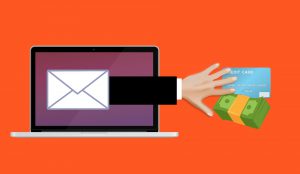Updated November 2024.
Today’s online world offers nearly infinite options for information and entertainment. But it also comes with risks of cybercrime. Hackers and other cyber criminals are constantly seeking to take advantage of your identity and resources by obtaining access to your private information. One of the most insidious scammer strategies is phishing. Here are some basic strategies to avoid taking the bait and keep your online accounts safe.
First of all, make sure each online account — whether it’s your social media account or online banking account — has a strong password. Avoid simple, short passwords that are easy to guess. The longer and more complex the password, the more difficult it will be for someone to deduce it. Keep track of your passwords either off-line in a secure location or through a secure online password manager service.
Phishing for information
Just as important as having strong passwords is to be alert for scams designed to get you to reveal your account information. Don’t take the bait. Pay attention and be aware of whose e-mails or friend requests you are accepting, and with whom you are actually messaging. Many Internet scammers are not focused on guessing your passwords, but instead on deceiving you into revealing them yourself. This is done through a practice called phishing, in which the cybercriminal pretends to be a friend you know, your place of work or even a well-known company, asking for your private information.
Common phishing techniques are e-mails or messages supposedly from the companies running your online accounts, saying there is a problem in your payment or account information. Others include offers of free coupons, links to make payments, fake invoices and promises of government refunds that are contingent on registration (entering your personal information).
Don’t take the bait
Another type of phishing scam is the chain letter. These fraudulent traps show up in your inbox or on social media pretending to be for a good cause. The chain letter will ask you to enter your credit card information (“donate”) and then send it on to all your friends, piggybacking off your good reputation to prove its legitimacy and trap more people. Resist clicking on these types of spam and instead look into the cause or contact the charity it claims to represent.
These forms of baiting from scammers need to be recognized for what they are: a trap. Don’t take the bait. If you believe a request for personal information is legitimate, call the real source, whether it’s your employer or some other organization. Privately message your friend to find out for sure if it’s really them. You can learn more about how to protect yourself from phishing scams from the Federal Trade Commission.
Make it automatic
Worried about clicking on the wrong thing? The US Department of Homeland Security recommends setting software updates to automatic. This eliminates having to keep track of updates and may prevent you from clicking on a fake update prompt from a nefarious source. Another tip is to make sure you have powerful antivirus software. Robust antivirus software can help protect you from some phishing scams and it can protect you if you slip up and enable a virus.
You should also make sure you have good anti-spam and junk-mail filters on your e-mail accounts. This can be provided either by your e-mail host or a security program on your computer. Backing up your data is also extremely important, in case a scam leads to data loss. Learn more cybersafety tips here.
What to do if you get snagged in a scam
Remaining vigilant for scams and resisting the urge to click and over-share are effective strategies to protect your online accounts. Another smart move is to contact your insurance agent, before trouble strikes, to learn about options for identity protection.
But what if you get snagged into revealing your password or sensitive information and one or more of your accounts gets hacked? Number one, change your passwords immediately. Next, take a close look at your accounts. If the scam involves your bank account or credit accounts, contact the financial institution to give them a heads-up and make sure nothing is amiss.
Remember to keep a skeptical eye toward online offers, social media interactions and e-mails. Take the necessary precautions to protect your identity and information. Don’t take the bait and fall victim to cybercrime.
by Jack Mainellis
